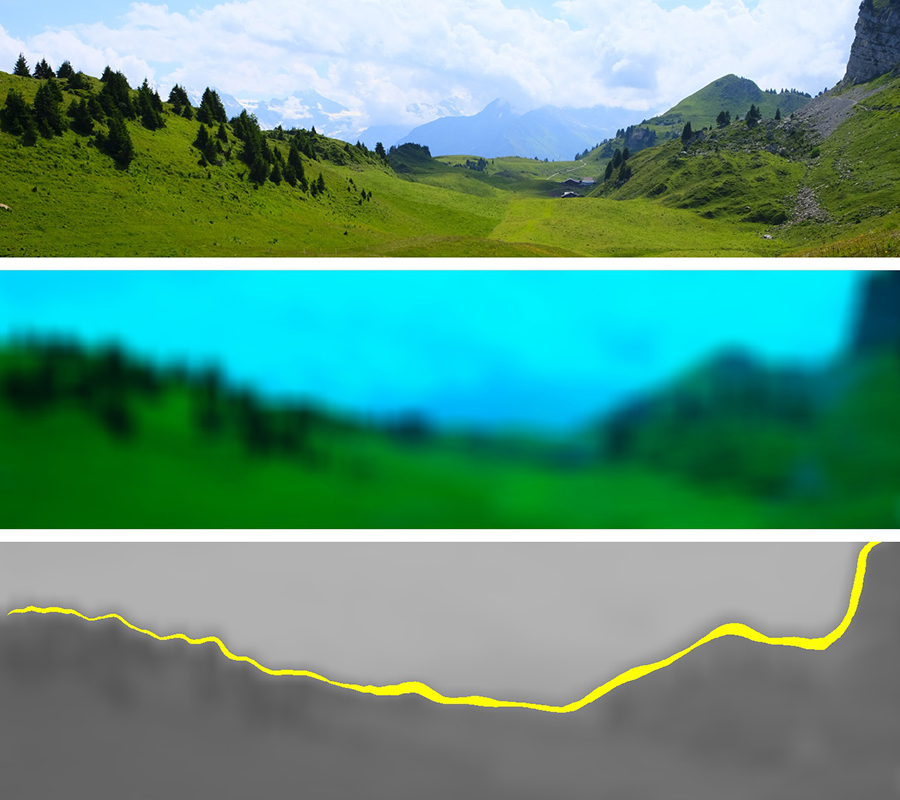Colorful images – seen through the eyes of mice
Researchers at the University Medical Center Göttingen have studied how nerve cells in the eye react to different color combinations. They found special cells in the eyes of mice that respond particularly well to contrasts between green and ultraviolet light. This could enable the animals to see the horizon clearly and use it for orientation. The scientific paper was published in "Nature Communications".

Photography of a scenery (top), simulated image information in the eye of the mouse (middle) and color transitions detected by the color detectors (yellow, bottom). Photo: private
(UMG/ BN, Duppé) The visual system of humans uses light to break down complex scenes into individual objects. The distinction between light and dark areas is an important clue. At the same time, the distribution of colors also determines how easily different objects can be recognized and distinguished from one another. Recognizing red fruit in the green foliage of a tree or blue blossoms in a meadow is possible even under different lighting conditions, like shadows or varying brightness. The origin of this color perception lies in different light receptors in the eye, which react most easily to either blue, green or red light. Nerve cells in the eye and brain then calculate the color components of a perceived image from the excitation states of these light receptors.
Many animals have different light receptors in their eyes which enable them in principle to distinguish colors. Yet, it is often unclear to what extent they actually make use of this. Scientists at the Department of Ophthalmology at the University Medical Center Göttingen (UMG) have now discovered special cells in the eyes of mice. Dr. Mohammad Khani and Prof. Dr. Tim Gollisch found that these cells combine the color information from different light receptors in an unusual way so that the cells could make special color information accessible to the animals. The research was supported by the European Research Council and the Göttingen Collaborative Research Center 889 “Cellular Mechanisms of Sensory Processing”. The results are now published in “Nature Communications”.
Mice have different light receptors, which are either particularly sensitive to green light or to ultraviolet (UV) light, which is invisible to the human eye. The nerve cells studied in the eyes of mice combine signals from both types of light receptors in such a way that certain color transitions specifically activate these cells. “These color detectors respond particularly well to transitions between the ultraviolet radiation of the sky and the green of vegetation,” says Prof. Dr. Tim Gollisch, senior author of the publication. “In this way, they could provide information to animals for spatial orientation.”
In addition, the scientists found that these cells are predominantly located in the lower part of the retina, which faces the sky and is thus exposed to the UV light. “Such differences between the upper and lower halves are not known for the human retina,” explains Dr. Mohammad Khani, first author of the paper.
“We still lack information about how the different types of neurons in the human eye process complex images,” says Prof. Gollisch. “The new findings from the eyes of mice may provide valuable clues about which cell properties and processing steps to expect and how to study them,” he adds. The scientists hope that future research will clarify whether similar processing circuits can also be found in the human eye.
translated from the original press release by C. Duppé, Bernstein Network




